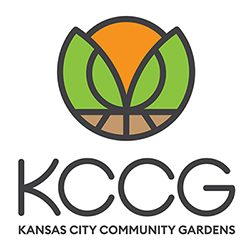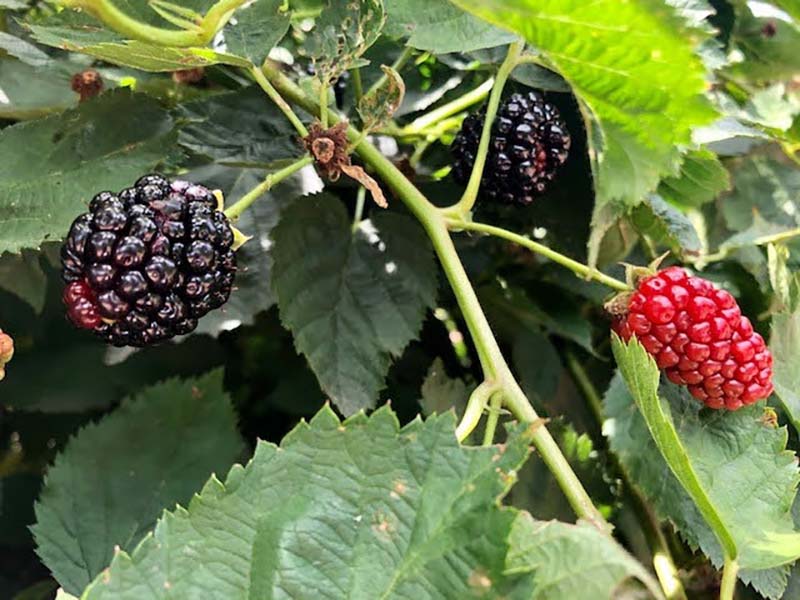For this week’s post, we welcome Giving Grove staff, Carter and Mary Jane, for a Q&A on all things orchards!
The Giving Grove of KCCG supports over 200 community orchards across the Kansas City metro area. These little orchards have a big impact in creating a perennial food system in welcoming green spaces, empowering local communities, and growing your favorite fruits, nuts, and berries! With the autumn harvest just around the corner, Carter, Program Associate, and Mary Jane, Community Engagement Coordinator, offer their best tips on
caring for your schoolyard orchard.
- What fruits can we look forward to harvesting in our school’s orchard in late August and September?
- Apples: Liberty, Enterprise
- European pears: Warren
- Asian pears: Yoinashi, Shinkot
- Raspberry and Fig
- Jujubes: Lang, Li, Coco, Shanxi Li
- What orchard maintenance tasks should we be completing right now?
- Carter: Summer pruning is really important right now. Check out our Summer Pruning Guide to learn more. You may also need to water more heavily during this time. Click here for a quick tutorial about watering.
- Mary Jane: Something a lot of people forget about is…HARVEST! Especially for schoolyard orchards who may not be in session in the summer, be on the lookout for your fruits ripening throughout your summer vacation. Letting your harvest overripe, fall on the ground, or be food for the birds is never fun. Invite your community to the orchard! If you know you’ll be away from the orchard throughout the summer, be sure to recruit a peer, parent, or neighbor who can visit the orchard. The orchard is a great place to host PTA events, faculty/staff meetings and it makes a wonderful extension to your classroom, for activities like reading and writing. And don’t forget to label your trees so the community knows which trees are ready for harvest and that they are welcome to come pick fruit.
- What is your favorite fruit to grow?
- Carter: I like the ease of growing European pears. If you let them go they can get wily, but consistent maintenance can lead to an enormous yield. And the fruits have so much utility: raw consumption, pear butter, pear sauce, fruit leather, salads, all sorts of pies and desserts.
-
- Mary Jane: Blackberries! It is so lovely to pop a sun-soaked berry in your mouth on a hot afternoon, like little bites of warm sunshine. After the summer harvest, however, the real fun is pruning them and cutting away the dead canes to make room for new growth. It’s a very rewarding task in the middle of the summer heat to prune and tie up the branches. Cleaning and weeding blackberries makes the bed look like new again and is the perfect reset to a productive berry season.
- What is your favorite fruit to eat?
- Carter: I don’t get to have it often, but Pawpaw (Asimina triloba). It has a unique custardy flavor with hints of mango, banana, and pineapple. It is also the largest edible fruit native to North America. It is also the Missouri state fruit!
-
- Mary Jane: I love a good Asian Pear. These are not like the ones you get at the supermarket! They’re crisp and juicy and the texture is perfect. Looks like an apple, tastes like a pear, but with a hint of caramel and butterscotch. Nothing gets better than that…except maybe a nice homegrown peach!
- Do you have a favorite fruit recipe that you like to make this time of year?
- Carter: I enjoy making Dutch apple pie with apple and Asian pear. The Asian pear adds a juiciness you can’t get any other way.
-
- Mary Jane: I like to make cobbler! I wish I could tell you a healthier favorite of mine, but that’s the joy of growing sweet fruit! Get your fill of salads and roasted veggies from your Schoolyard Garden, but the trees are so rewarding with cobblers and pies, sweet salsas or sauces, any fruit drizzled with some honey and cinnamon…just the perfect autumn treat! Any excess harvest can be dehydrated, frozen, or canned to enjoy throughout the year!
- Anything else you think we should know?
- Carter: Caring for fruit trees is a long term and continual process. You can’t plant fruit trees and let them sit for years without any maintenance. And you shouldn’t let your tree fruit the first few years. You need to pinch the blossoms off so the tree can put its energy into good roots and strong, sturdy branches. It may seem disappointing to pull those blossoms and fruits off in the early years, but it will be worth it once you start getting 80-100 pounds of fruit as the tree matures!
-
- Mary Jane: I second that! The easiest thing to do for your orchard is to simply be there. Notice how the trees change from week to week and season to season. Be there to see when certain pests or leaf spots emerge. Get to know your trees like you would one of your students. They take nourishment and discipline, and lots of guidance to reach their potential. Most importantly, give yourself grace in the learning curve that is required from an orchard. The trees are resilient, but still need your attention. Get connected to The Giving Grove’s workshops, site visits, Facebook Group, newsletter, YouTube videos, and more. We are here to support, coach, and encourage you! Check out our primary and secondary school curriculum! The NEST program focuses on Nutrition, Environmental Benefits, Soil Biology, and Tree Biology. This is a free and online resource at https://www.givinggrove.org/resources
Carter and Mary Jane can be reached at givinggrove{at}gmail.com or 816-931-3877 ext. 312.
Thank you both for sharing!







